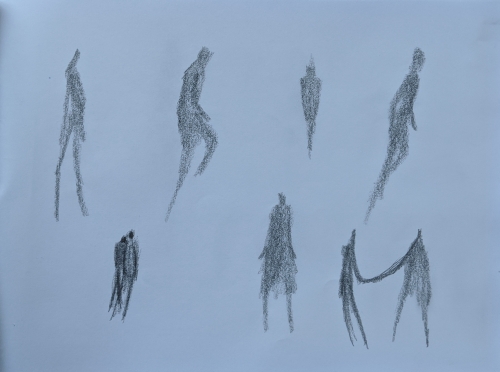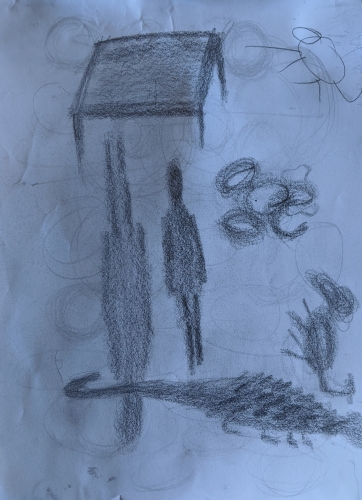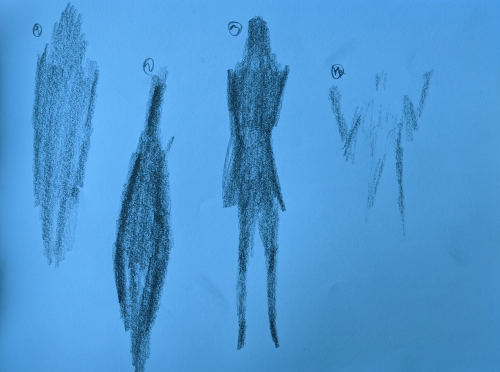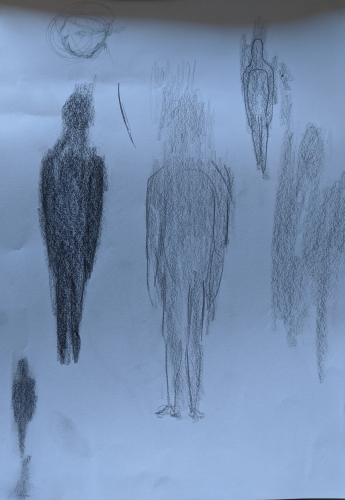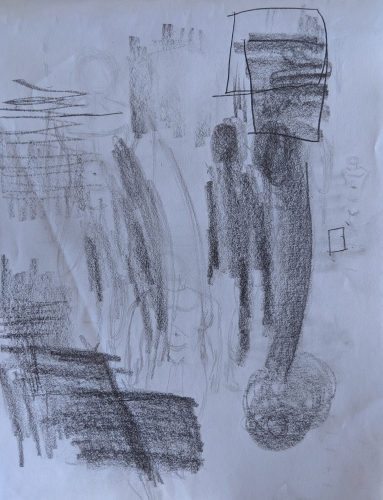Theme
Play and Rules
Context
Can you draw if you can't draw?
This time around, I take a step back from digital and try exploring traditional mediums, here sketching.
I tried figure sketching a few years back and was intrigued by the idea of capturing the essence of various poses, however, I struggled. For me, it has been always challenging to portray that on paper as I do not have any experience in this medium. So, I asked myself a question, can I draw a human figure without knowing how to draw, just from visual memories? Without applying too much mathematics and diving deeper into forms and structures, rather just let the memory guide me.
I set out basic rules...
1) Try not to get lost in the details, just focus on prominent parts
2) Let the visual memory guide you
3) No lifting up the pencil
4) Drawing in one axis
5) No obvious forms/lines/curves, capture the essence of the figure
Method
Draw a few human figures, no exact proportions mandatory, just focus on capturing the essence of the figure.
Response
I tried to develop a new art style by playing with some basic principles/rules.
The process itself is very flexible, hence very suitable to someone who doesn't know drawing or principles of anatomy/figure. Constantly moving pencil on paper in one direction enabled me to narrow my thoughts and develop a quick visual memory of a figure. In the beginning, I struggled to control the strokes but then I thought why to control something that I don't even know in the first place. So, I let the pencil glide all over the paper, focused on different aspects of human figures, such as elbow, knees, shoulder, hands, head. As I progressed, the drawing started taking shapes of different human figures and the volume built up automatically. That point of time I realised that we store visual data in the form of memory in our subconscious mind, if we can isolate our thoughts and focus on one thing, we can do things without the need of experience.
This inspired me to keep trying until I was able to draw an obvious human figure. I tried multiple times with a figure in head and every time the output was improving. I was not focusing on what I was drawing, instead, was trying to strengthen my memory of the figure. Coincidently, that also improved my drawing, the forms started becoming less messy in a way. That got even interesting when I tried to develop a connection between two figures. I stuck to thicker pencil tip because I thought maybe it could conceal some of my mistakes inside thicker strokes, and it turned out well, I guess. Transferring the data in my head to my hand was an instant process and that allowed me to draw accurately in a way. If I was thinking of arm, then automatically the rapid motion of moving the pencil in one axis would quickly take me to that point on the figure where I should draw the arms.
Reflection
This seamless connection between a thought generated in my head and its output on paper was an instant, and in a way, forgiving process and that inspired me to research for similar techniques of different artists.
I stumbled upon Valdas Misevičius on Flickr.com (https://www.flickr.com/people/35489937@N05/)
He uses Etching for his artworks. I think he captures the essence of various human figures really well by playing with similar rules, like no definite shape, not calculations of proportions, let the process itself define the end-result, no need of detailing, and these figures have a distinct, unconventional look.
